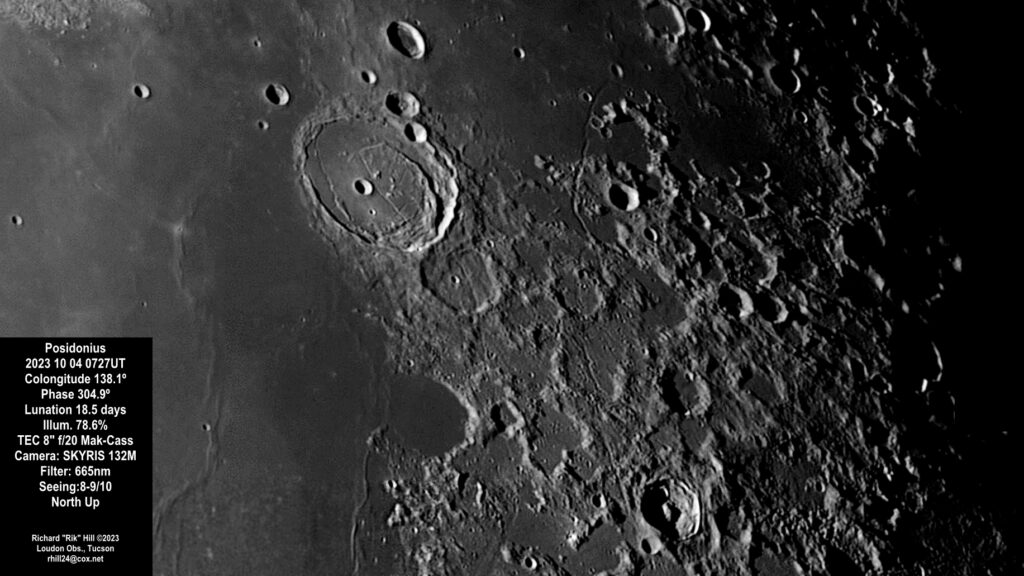On the northeastern shore of Mare Serenitatis is found the spectacular crater Posidonius (99 km). This is what’s called a fractured floor crater (FFC) meaning that it was flooded, the lava receded and the floor cracked resulting in the fissures we call Rimae Posidonius. Posidonius is thought to contain the remnants of an older crater wall seen on the east (right) side. There are two long, parallel north-south rimae immediately apparent on the floor of Posidonius. They are not at all the alike. The one in the middle of the crater is a graben-like rima that ends on the north end where it meets the interior crater wall. The rima to the west is not a linear crack but in orbiter images is seen as tightly sinuous formed by a fluid, probably lava, during some post-impact modification and flooding from Serenitatis as it takes a right angled turn to the west wall. On the other end it runs up to the northern wall and follows along the inside of that wall all the way to the crater Posidonius (14 km) B on the northeast wall. You’ll need a large aperture to follow along its full extent.
South of Posidonius is the ruined crater Chacornac (53 km), as much as a billion years older than Posidonius, from the beginnings of the Moons formation. It has been overlain by ejecta from numerous nearby maria and crater impacts. Notice how the central rima in Posidonius appears to continue south across Chacornac and beyond.
Further south from Chacornac is an embayment off the mare. This is Le Monnier (63 km). The south side of this crater was the landing site for Luna (Lunik) 21. From this landing site the onboard rover, Lunokhod2, traveled 37 km across the surface to the flanks of the southeastern wall, the longest distanced traveled by any lunar roving vehicle ever. This rover had 7 cameras on board. I invite the readers to look up the pictures and exploits of this mission.
There’s a nice wrinkle ridge winding its way south from the southern point Le Monnier. This is Dorsa Aldovandri that winds further south for 124 km well out of the limits of this image. To the southeast of Le Monnier is nice crater Romer (41 km) with terraced walls.The interior of this crater is worth the time on a good steady night with highest magnifications! To the left of this crater is a graben-like rima, Rima Romer. Another such rima is to the right of Posidonius just left of the smaller crater G.Bond (19 km). This rima is, as you might expect, Rima G.Bond.

